Japandi style is popping up everywhere because it blends the best parts of Japanese and Scandinavian design. It focuses on simplicity, natural materials, and calm colors. This mix creates spaces that feel peaceful and inviting.
The Japandi aesthetic is popular now because it helps people make their homes feel cozy and clutter-free while still looking stylish. Many want a space that feels both modern and timeless, and Japandi delivers that balance.
People are drawn to this look because it’s easy to live with and brings a sense of calm. Its clean lines and warm textures fit well in many homes, which is why it’s everywhere right now.
What Is Japandi Aesthetic?
Japandi blends two design styles into one simple, calm look. It mixes natural colors, clean shapes, and a focus on practical beauty.
Key Elements of Japandi Design


Japandi uses a mix of Japanese minimalism and Scandinavian warmth. You’ll find simple furniture with clean lines, made from natural wood or bamboo. The colors are usually soft, with beige, white, or muted greens.
Materials like linen and ceramics add texture without loud patterns. Spaces stay clutter-free, emphasizing clear surfaces and natural light. Functionality is just as important as looks, so every item has a purpose.
Origins and Cultural Fusion
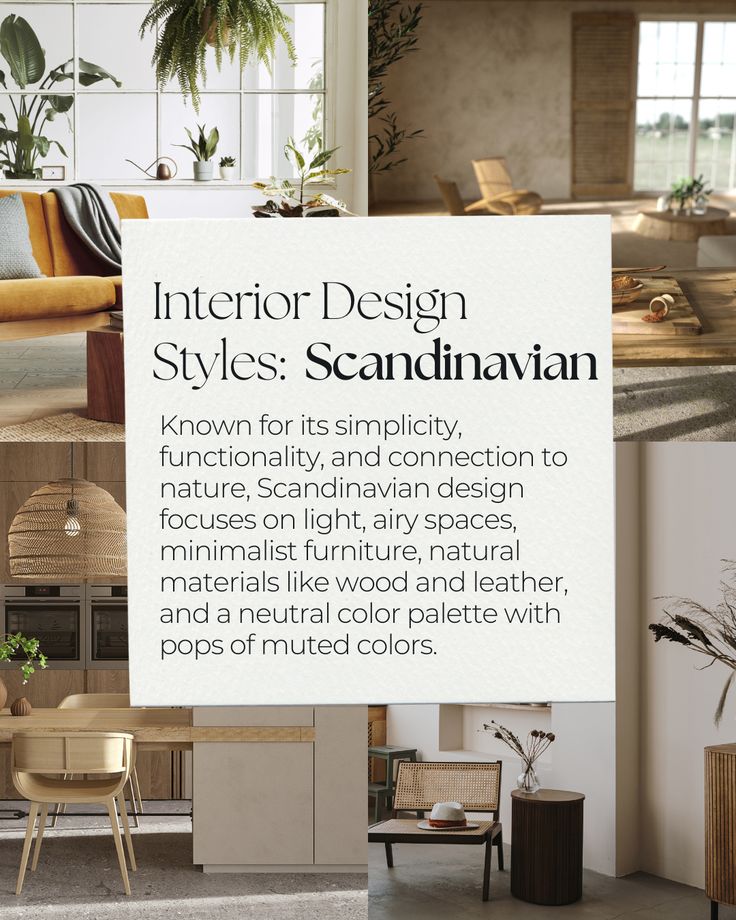
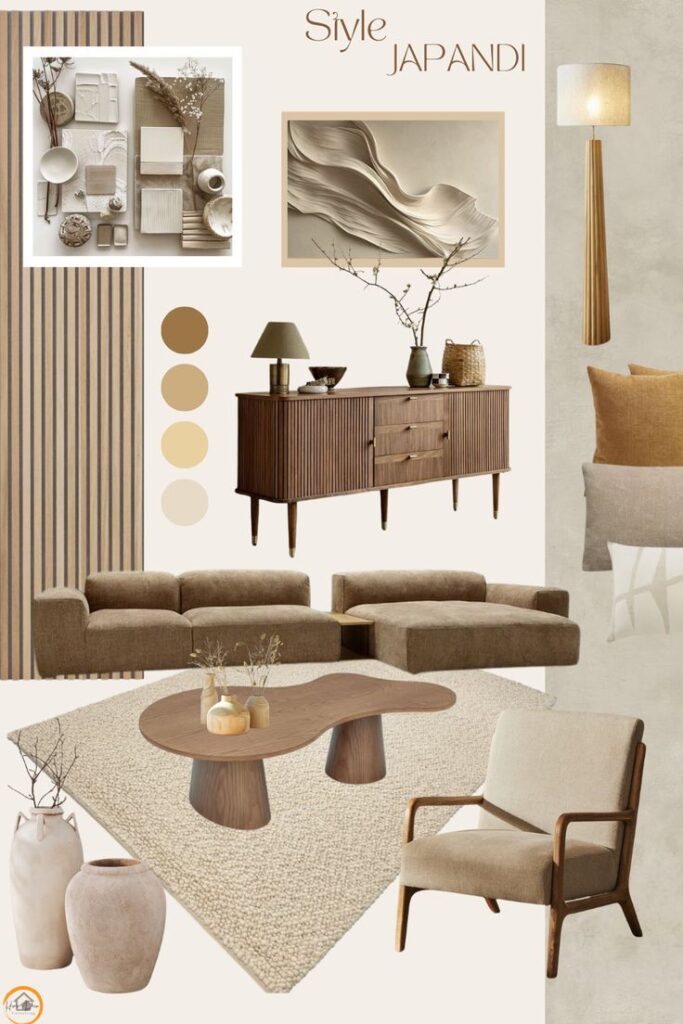
Japandi comes from combining Japanese and Scandinavian styles. Both cultures value minimalism but have different approaches. Japan focuses on harmony with nature and handcrafted details. Scandinavia emphasizes coziness and light.
This mix started gaining attention in the 2010s. Designers saw how both styles share simple beauty and comfort. The blend creates spaces that feel peaceful, warm, and balanced.
Distinctive Features Compared to Other Styles
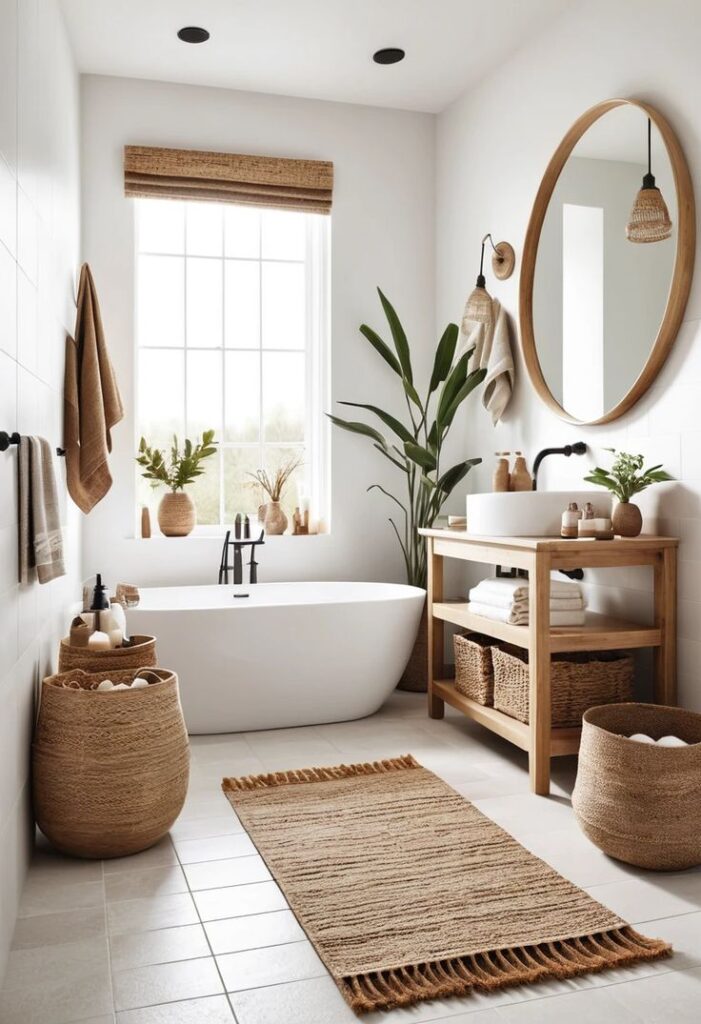
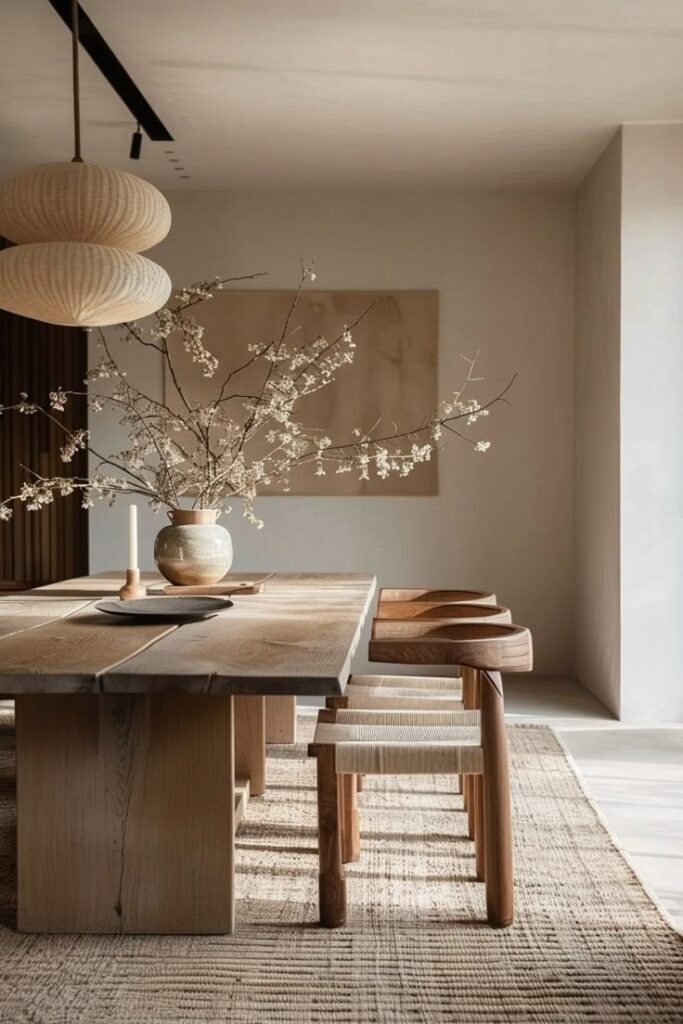
Compared to industrial or modern styles, Japandi is softer and warmer. It avoids metal and harsh colors in favor of natural wood and pastel tones.
Unlike pure Japanese or Scandinavian design, Japandi balances both. It combines the Japanese love for dark wood and rustic textures with the Scandinavian focus on bright, airy spaces.
This mix makes Japandi unique for people who want calm, natural, and functional interiors without extremes.
Why Japandi Is So Popular Right Now
Japandi combines clean, simple design with warm, natural elements. It fits well in the busy, modern world where people want calm and comfort in their homes. Its mix of style and practical use makes it stand out today.
Rising Appeal in Modern Interiors
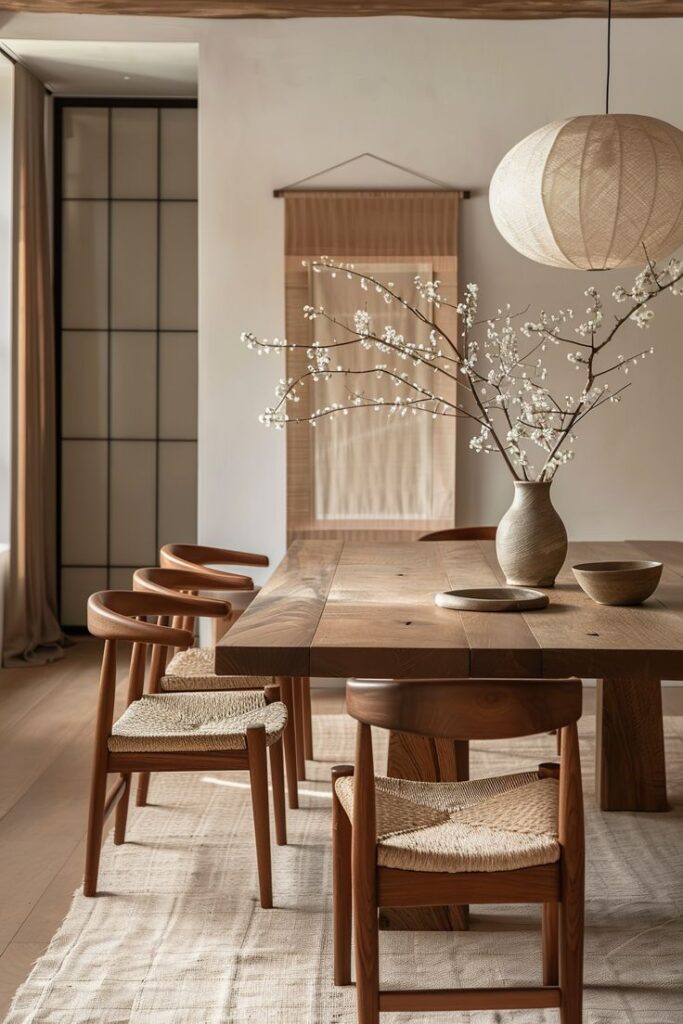

Japandi’s appeal comes from how it blends the best of Japanese and Scandinavian design. Both focus on natural materials like wood and stone. This creates a warm, cozy feeling that many find relaxing.
People also like the soft, neutral colors used in Japandi. These shades make rooms feel brighter and more open. The style fits well in small city apartments where space is limited. Its simplicity makes homes look clean and neat without feeling empty.
Influence of Social Media and Trends
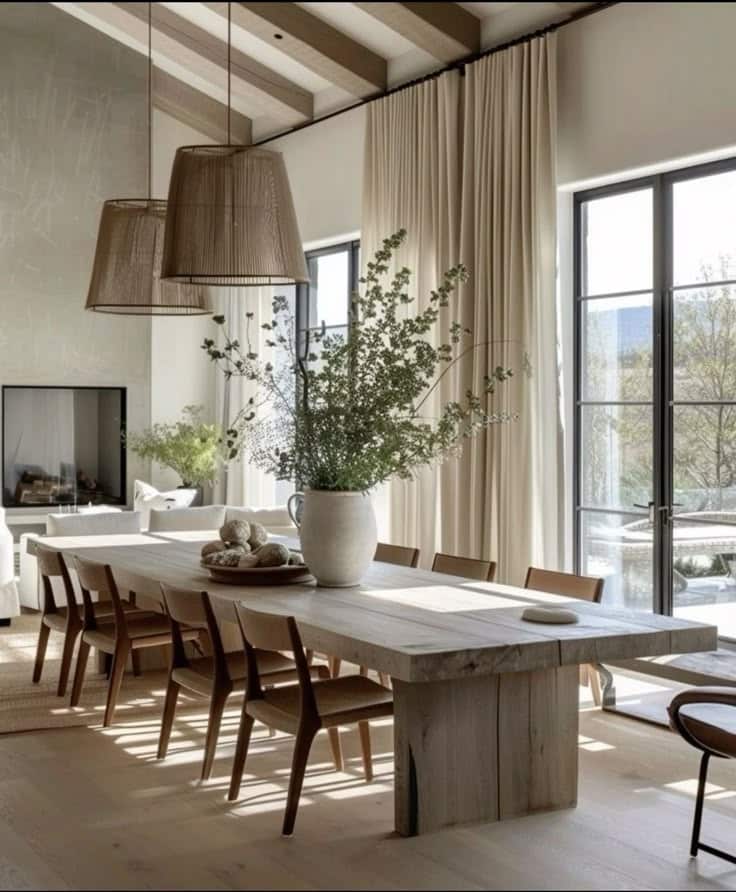

Social media plays a big role in Japandi’s popularity. Platforms like Instagram and Pinterest show endless images of Japandi rooms. These photos inspire many people to try the style themselves.
Influencers and home decor brands often promote Japandi because it looks good online. The style’s minimal but elegant look is easy to photograph. This helps spread Japandi to a wider audience quickly.
The Role of Minimalism and Functionality
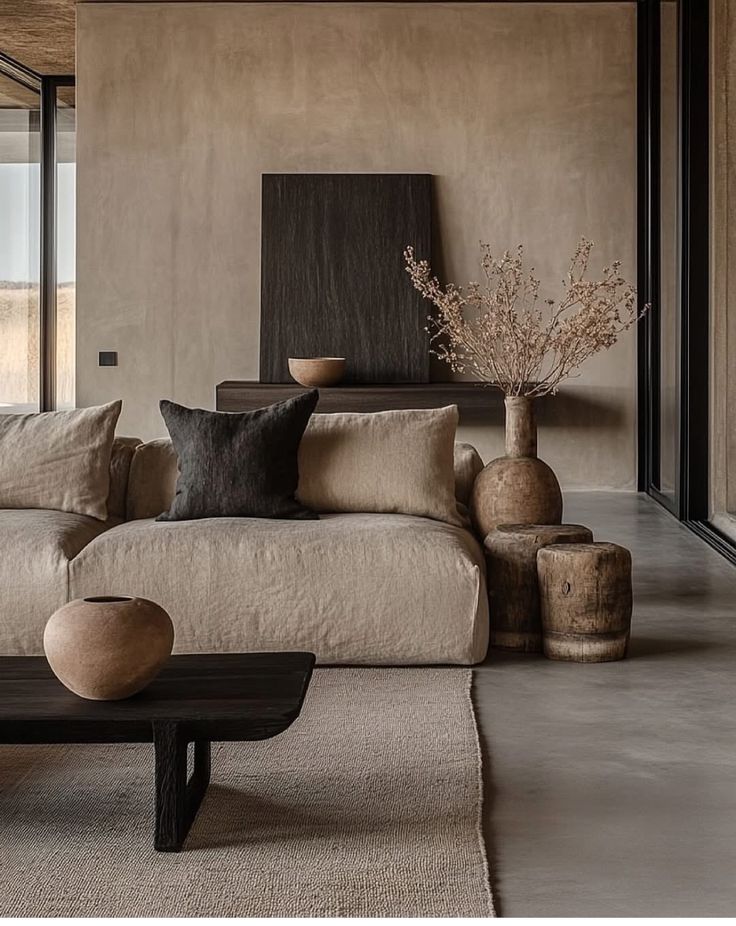
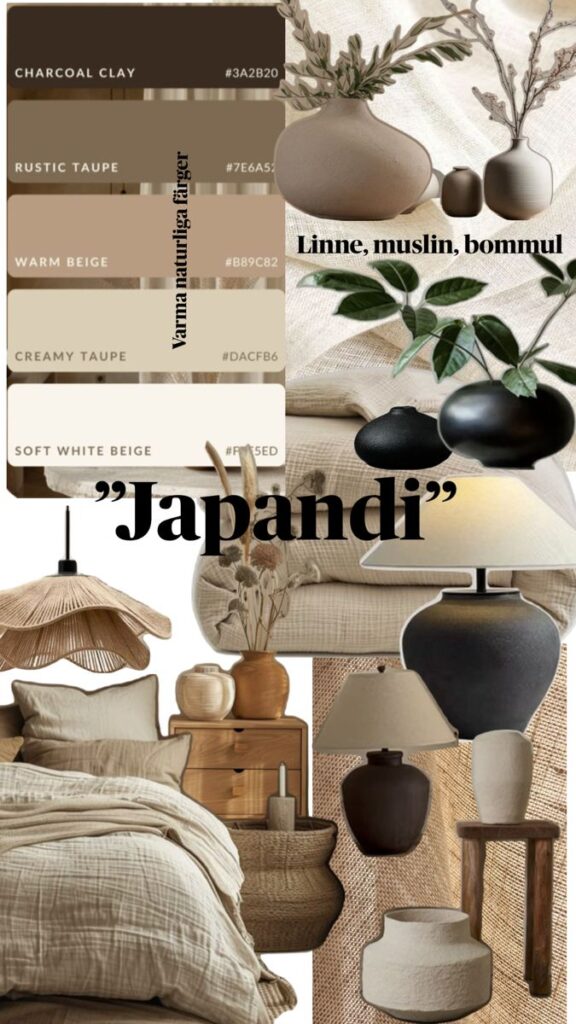
Japandi puts a strong focus on minimalism. It avoids clutter and unnecessary decoration. Everything in the space has a purpose, which appeals to those who want an organized home.
The style also values functionality. Furniture is designed to be useful and beautiful at the same time. This approach fits well with modern lifestyles where people want their homes to be both stylish and livable.
Key Features of Japandi Minimalism:
| Feature | Description |
|---|---|
| Clean lines | Simple shapes without extra detail |
| Natural materials | Wood, bamboo, and linen mostly used |
| Neutral colors | Whites, beige, gray, and soft blacks |
| Practical design | Furniture with storage or multitasking |
This balance of form and function explains why many choose Japandi today.
How to Bring Japandi Style Into Your Home
Japandi style focuses on simple, clean design and natural elements. It combines well-chosen furniture, calm colors, and a mix of Japanese and Scandinavian details to create a peaceful, balanced space.
Essential Furniture and Decor Choices
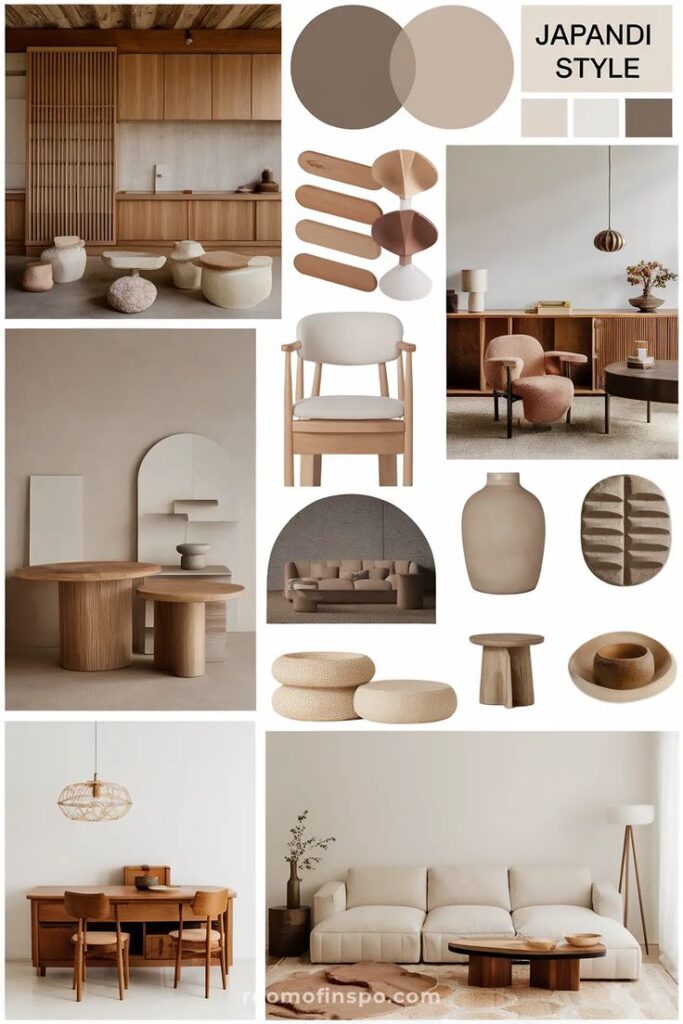
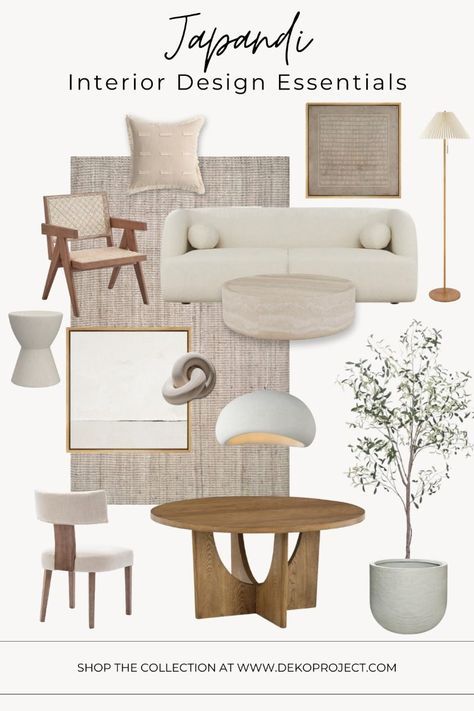
Japandi furniture is simple and functional. Look for low-profile pieces made from natural wood like oak or walnut. Furniture often has clean lines without a lot of extra decoration.
Decor should be minimal. Use a few key accessories such as handmade pottery, woven baskets, or linen cushions. Plants like bonsai trees or simple green plants add life without clutter.
Choose items that feel light and airy. Avoid heavy or too flashy pieces. The goal is to create a calm, inviting atmosphere with just a few well-chosen things.
Color Palettes and Materials

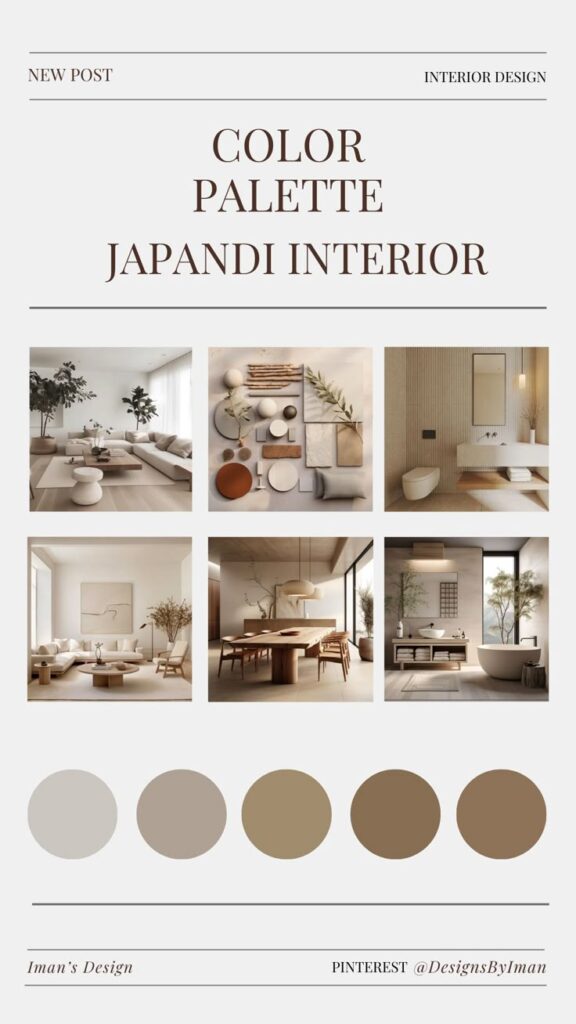
Japandi colors are soft and natural. Neutral tones like beige, soft gray, and warm white form the base. You can add deeper colors like forest green, navy, or black in small amounts.
Materials are important. Wood, stone, and textiles like linen and cotton bring texture and warmth. Matte finishes are preferred over shiny surfaces.
Using these colors and materials helps make spaces feel grounded and cozy without feeling crowded or busy.
Blending Japanese and Scandinavian Influences

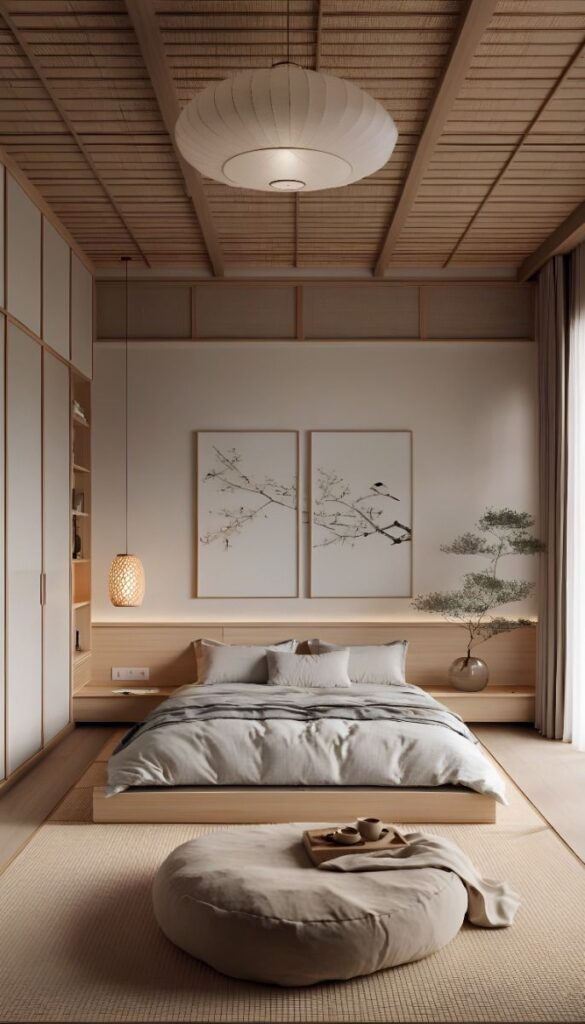
Japandi mixes Japan’s love for simplicity with Scandinavia’s focus on comfort. It balances clean lines and open space with warmth and coziness.
From Japan, it takes minimalism and natural elements. From Scandinavia, it borrows soft textiles and functional design.
Furniture often combines both influences, like a Scandinavian-style wooden chair with a Japanese minimalist shape. Both cultures’ respect for nature is clear in the choice of materials and colors.
This blend creates a home that is both peaceful and practical, focused on quality over quantity.
- 1.0Kshares
- Facebook0
- Pinterest1.0K
- Twitter1


